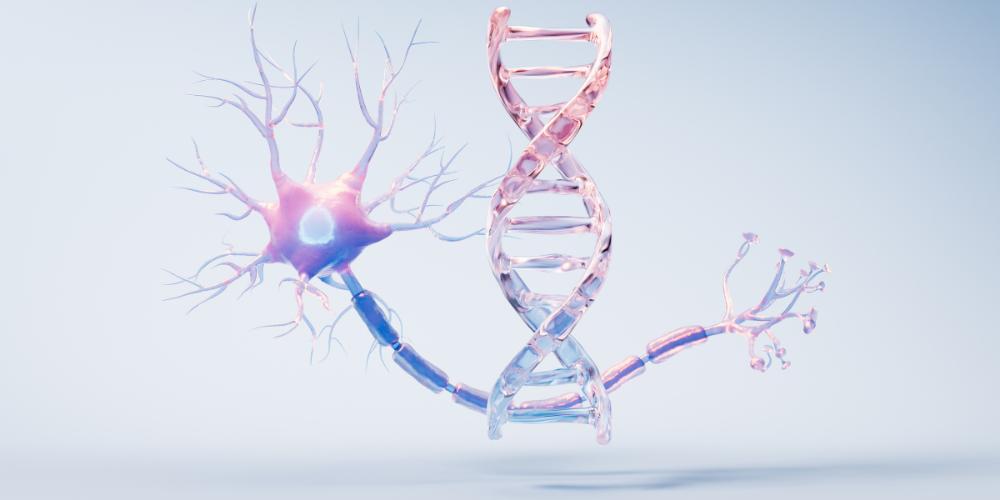Developing a Novel Oral Monoclonal Antibody
The possibility of delivering an oral monoclonal antibody has wide-reaching impact for drug delivery and patient experience. In this interview, Dr Randall Mrsny, University of Bath, describes the exciting journey of cracking the code to deliver an oral monoclonal antibody.

What was the background of developing an orally
dosed biopharmaceutical?
Oral drug delivery efforts have mostly been focused on stabilizing labile biopharmaceuticals in the intestinal lumen with the hope that this will somehow improve their uptake. The real barrier to biopharmaceuticals uptake is the single layer of cells that constitute the epithelium. Seeking to physically or chemically overwhelm that barrier comes with real safety concerns, because of the potential for chronic damage.
We looked at what Mother Nature does to get intact macromolecules efficiently across the epithelium. We identified exotoxins made by human intestinal pathogens that can modulate immune responses within the lamina propria that lies under the epithelium.
These exotoxins can help bacteria to establish chronic infections at the luminal surface of an epithelium by suppressing the local host immune responses. To achieve this outcome, exotoxins must cross the epithelium and selectively target immune-related cells within the lamina propria involved in local immune responses.
We deconstructed some of these exotoxins capable of this transcytosis function and found they all used a carrier domain of about 25,000-30,000 molecular weight to deliver a toxic payload to cells in the lamina propria. That was the eureka moment; the recognition that a carrier domain in these toxins functioned as a pure carrier element and was not, by itself, highly immunogenic or toxic.
"We looked at what Mother Nature does to get intact macromolecules efficiently across the epithelium."
How did that knowledge transfer into something capable of delivery?
We realized we could remove the toxic component payload of these exotoxins to produce a pure carrier domain could then be genetically or chemically fused to a therapeutic cargo of interest. This approach allowed for the delivery of large macromolecules because the vesicles used by the carrier domain to traffic through the cell are on the order of about 100 nanometers in diameter. Since the average antibody is about seven to eight nanometers, this allows for a delivery approach that can be used for all currently approved biopharmaceuticals.
In testing this approach, it became obvious that the carrier domain could guide the associated therapeutic cargo away from lysosomal destruction and efficiently deliver it to the basal side of intestinal epithelial cells though a series of transient interactions with different endogenous receptor elements. By using this ATP-driven, active transport route, the carrier component can deliver a therapeutic cargo into the body without damage or modification. This was very important in identifying a platform strategy to deliver biologically active biopharmaceuticals.
Using this approach has been a godsend in a couple of ways. One is that we can use the vesicular pathway accessed by these exotoxins to pull cargos through intestinal epithelial cells in what we call a privileged pathway to deliver bioactive macromolecules. Secondly, the pathway works very efficiently because of its ATP-driven nature, delivering these materials at a rate about as fast as aspirin being absorbed into your body. Third, theoretically, you can get nearly 100% of the material across the intestinal epithelium if it sufficiently stable at the luminal surface.
Why did you start with IL-10?
Il-10 is a phenomenal molecule and showed great promise when given systemically for suppressing inflammatory responses, especially in the intestine. When it’s given systemically, however, you have horrific side effects. By the time you reach concentrations in the intestine required for local benefit, you cause anemia that make systemic administration unacceptable.
One of the direct advantages of this platform is the ability to park molecules in the lamina propria through interactions of the carrier domain with receptors on immune-related cells in this compartment. I had the idea to park IL-10 in that compartment using this natural mechanism and in this case it has worked out very well. Since IL-10 interacts with its receptor much more efficiently than the carrier component does with its receptor in the same compartment, the actions of IL-10 dominate and are focused in the lamina propria without systemic side effects.
Because this is completely novel, was there a hurdle you didn’t anticipate?
Our challenge in developing these molecules was to demonstrate local pharmacokinetics (PK) and compare that to the pharmacodynamics (PD) that we are hoping to achieve. Because we were delivering locally in this fashion with minimal PK, people in the industry ask, “I see all this PD, where’s the PK that should go with it?” We’re removing the PK, which was the problem for these molecules, while still having the wonderful PD that everyone wants to see. Thus, we had to take tissue biopsies to verify that, indeed, this is local PK was functioning as we would predict. We can do that in preclinical models, but it is very difficult to demonstrate this same correlation in a clinical setting.
Validation of preclinical models was another concern of ours. We were confident that this pathway would be active in humans because our carrier components were produced by pathogens capable of clinical infections. We were uncertain if this translated to other species and had to verify that these pathways were also present in standard preclinical models such as monkey, rat, and mouse. It appears that these pathways and mechanisms are, indeed, present in those species.
"Our efficient oral delivery goes against what people in the industry are used to thinking."
Can you speak to the unexpected benefits of this medicine design approach?
When we make these molecules, we usually make them as genetic fusions of the carrier component with a cargo of interest. Remarkably, the carrier component seems to almost act like a chaperone in helping the cargo component fold properly. We typically get very high expression of these chimeras, where you’d get marginal expression of the cargo by itself. This is probably indicative of how the carrier component helps in production of the full-length toxin.
We’ve had excellent outcomes for a wide range of carrier-cargoes constructs produced in E. coli. In the biopharmaceutical industry, we talk about the amount of final product per gram of cell pellet. A good outcome would be in the 10-15% range, but we tend to see much better outcomes, again possibly due to the chaperone-type behavior of the carrier component and the well-behaved nature of these molecules.
Can you speak to some of the challenges in measuring this delivery, as it is so novel?
Our efficient oral delivery goes against what people in the industry are used to thinking. If you were delivering these molecules by injection or infusion, you get ~100% of it into systemic circulation. Each time your heart pumps and pushes blood through your body, about 10% or so of that blood and the injected molecule ends up in the vasculature of your liver and intestines. In the case of oral uptake, 100% of the absorbed drug is delivered to your liver and intestines before that blood even reaches your heart. So, for the same systemic PK profile, the PD of an orally delivered biopharmaceutical will be different from that of an injected version. This makes the desired dose much lower than one might expect for a molecule that acts in your liver and intestines.
In the case of IL-10, our clinical dose of three milligrams
works wonderfully. That’s three milligrams total dose,
not per kilogram. This small amount is effective because
you’re putting it exactly at the spot where it needs to
be, without a large volume of distribution that would
be associated with a systemic injection. Because
these doses are much lower than usual for an injected
biopharmaceutical, it can look odd to some people.
Because of these differences, we have had to rethink
the clinical strategy, dose, and frequency of dose from
what has previously been used. It’s not this shot to a pill
journey with the exact same PK profile. It’s different, and
it should be different.








